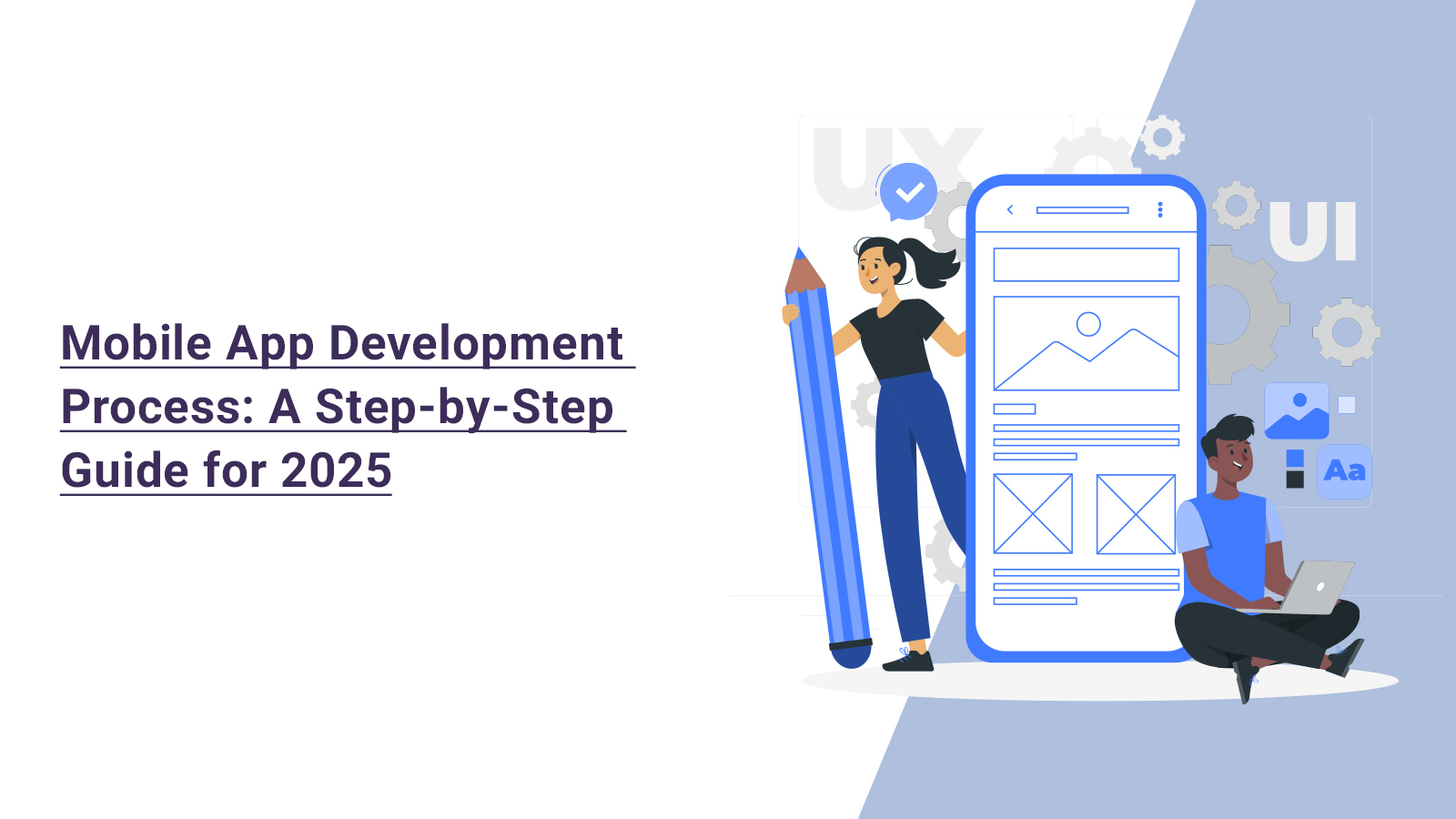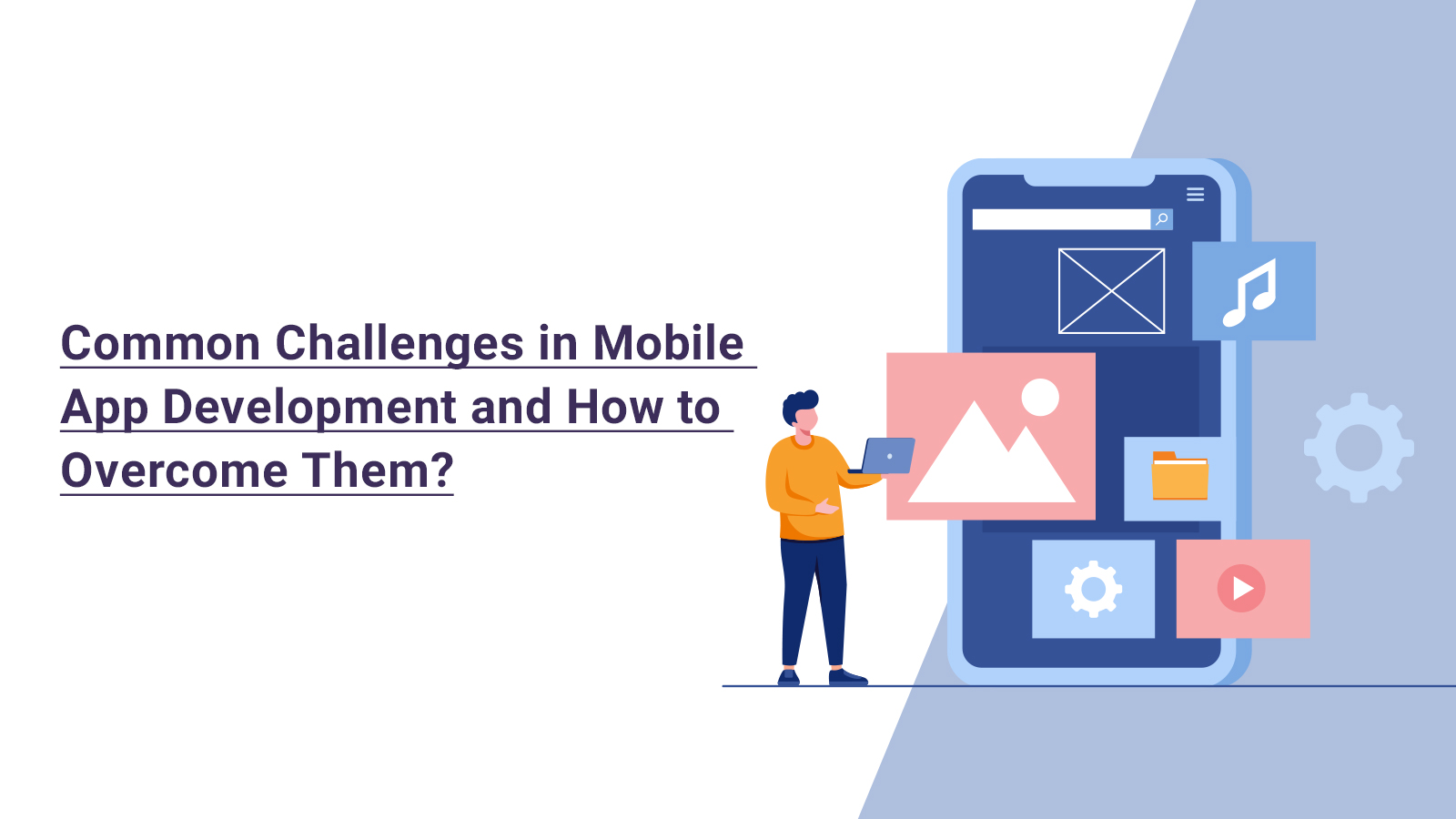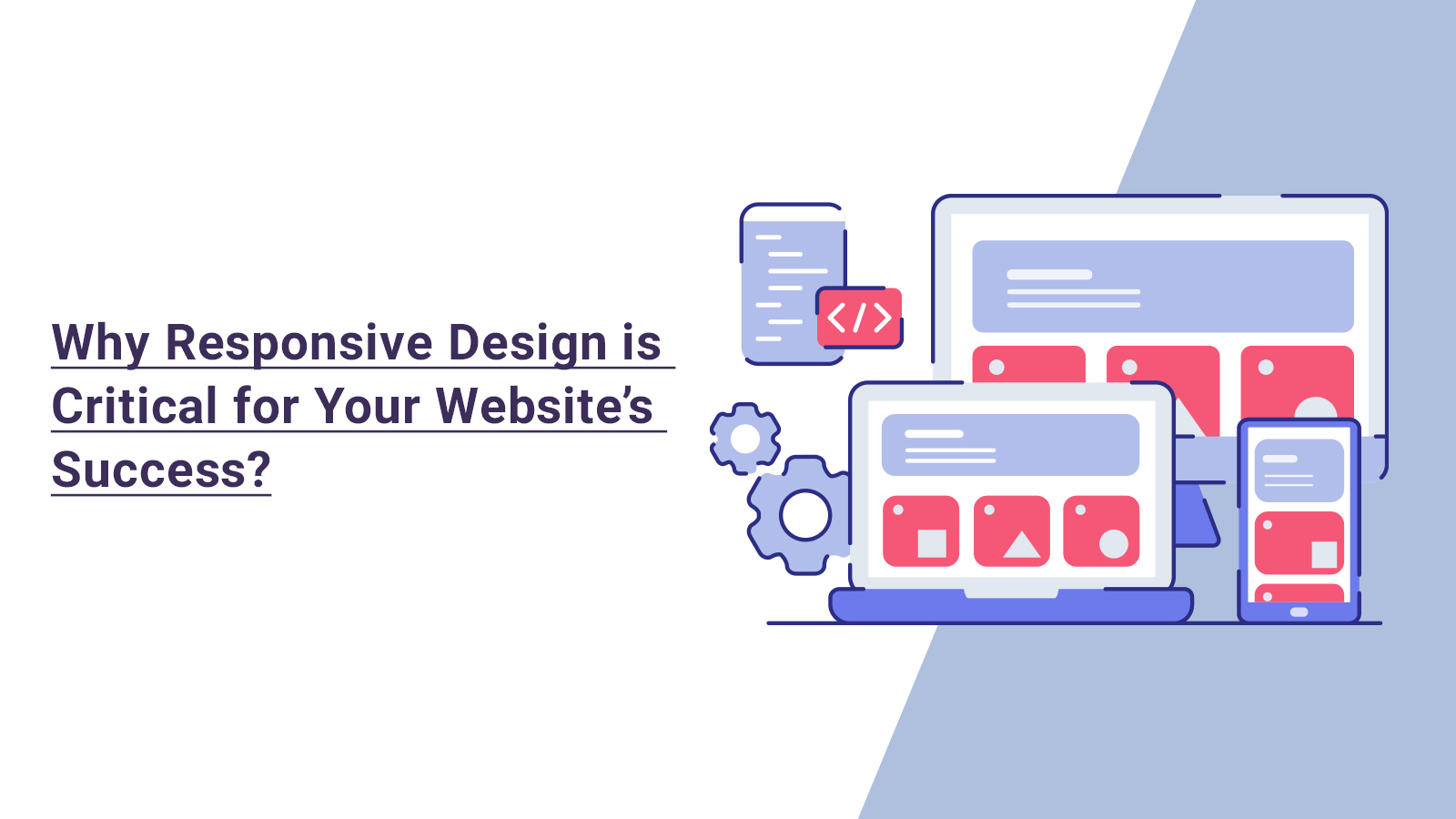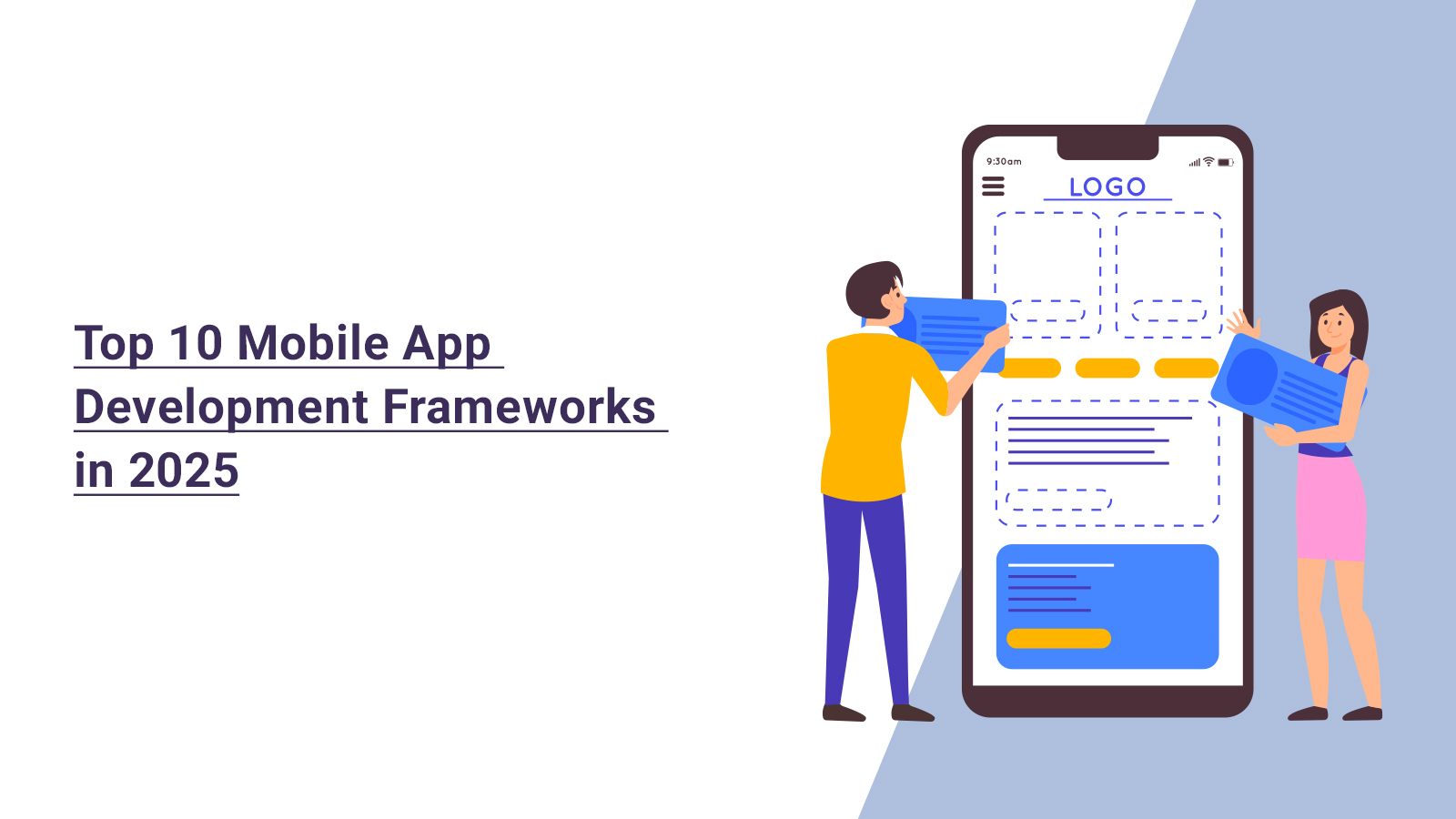Our blog will cover a detailed, step-by-step guide on the essential factors of the Mobile App Development Process in 2025.
Mobile applications have been true game changers in the tech space since the advent of smartphones. They aim to simplify our existence, supporting efficiency, fostering communication, and adding functional value to life.
Developers set goals to deliver handy features that would make activities easier and more pleasing. With the help of these apps, people have started to unravel the scope of technology. And now these are a ‘must-have’ in the modern world. This article explores their importance and multifaceted roles, also explaining the process of developing a mobile app.
Importance of Online Mobile Application Development in Modern Business
Mobile applications have transformed every aspect of the commercial world and its interaction with the customer. Apps are considered invaluable assets that offer much more than simple customer convenience. It is currently astonishing that business practices involving millions of tasks are executable at the tips of fingers through developing a mobile application.
Businesses stand to benefit from apps in many ways. Such as increased brand awareness, marketing, publicity, engagement, and enhanced targeting. Mobile applications have sweetened business and consumer relations, and market trends are leaning more toward app-centric approaches.
In the modern age, transport, food delivery, grocery delivery, beauty, health, financial and entertainment industries operate through mobile applications. Some businesses employ apps to present content and services to their users, and this method is now slowly replacing traditional websites.
Mobile application development involves several stages: programming, architecture, coding, debugging, and implementation. Some of the issues that need to be addressed include usability, look and feel, optimization, security, and portability across platforms. All these phases involve discussion with the designer, developer, and tester teams. To ensure delivery of an application that is functional, appealing to the users, and adequate to meet business needs. Let’s understand this in the next section in detail:
What is Mobile App Development?
Mobile app development involves designing, implementing, and deploying applications that can be used on portable technologies. These include mobile phones, tablets and notebook computers, smart watches, eBook readers, portable gaming devices, and others. It entails app conceptualization, architecture, development, integration, assessment, implementation, and execution of apps, architecture, security, and compatibility with user interface, performance, users, and platforms. Such an approach guarantees that the developed app meets the user requirements and the goals of the business and provides sufficient functionality to become a reliable, easy-to-use product. Now let’s understand the app development process in detail.
Mobile App Development Process Step by Step:
Step 1: Strategy
The process of mobile app development begins by defining why a mobile application is the right solution for a particular problem or idea.
The strategy phase includes defining the app’s goals and measures of success. Like conducting market research, analyzing industry competitors, determining customer requirements, and determining the app’s target audience and scenarios of use.
Organizations also analyze which mobile app development platform is most suitable for their needs and what marketing strategy would best promote the app’s release.
Step 2: Planning and Wireframing
In the planning phase, the organizations reach a consensus on the teams that will be involved, the tools and technologies to be used, and the timelines for developing the mobile app.
The team outlines what kind of application to develop, who will develop it, and which operating systems. It then creates a product roadmap, deciding which features will be built in what order and setting milestones. Finally, the team designs a project plan to meet the intended release date.
At this stage, interaction scenarios and wireframes for each page are developed and reviewed by the stakeholders, and the users’ experience is described in detail.
Step 3: Designing the User Interface
During the design phase, the interface, or how the mobile app is going to look and where all the controls are going to be placed, are discussed.
They map the user journey and design wireframes and screens at different levels of abstraction and detail, starting with low-level representations at the initial stages. The developers and engineers get involved in prototyping and making decisions about the app’s look and feel to check whether it is possible to implement the app on the chosen platforms.
The approved wireframes are then dressed up into a detailed UI with some of the preferred colors and effects for aesthetic value.
Step 4: Development
In this step of how to develop an app, the coding of the solution started in line with the requirements set and agreed upon in the planning phase. The assignment is divided into modules and distributed among the team members.
Using the Agile methodology, multiple sprints are initiated, each lasting 2-4 weeks. The final deliverables are also reviewed at each sprint to accommodate the feedback from other stakeholders. Every sprint has fixed objectives, and the items are ranked according to their priority by clients.
The development phase also involves defining the technical architecture and technological stack, defining development targets, and writing code for the application.
Step 5: Optimization
In this step of how to make a mobile app, the developed modules are enhanced to guarantee smooth operation. Each developed screen is checked and adjusted in terms of compatibility with different Web browsers and mobile devices. Optimizations like these help the app run optimally without hitches and create a seamless experience for users.
Step 6: Testing
The testing phase is an important stage in the mobile application development process. As a result of testing, organizations can be confident that the app will be secure and optimally functional, as well as easy to use.
In this phase, teams guarantee the quality of an application by developing test scenarios for determining its usability, performance, stability, and security issues on all targeted devices. Some of the tools adopted for testing are Selenium test automation tools and various remote mobile devices through AWS Farm.
After the deliverables pass through the company’s QA, they are forwarded to the client for checks and final approval to launch the project.
Step 7: Release
In the release phase, the end products resulting from the software development process are turned over to the client. Support is offered in implementing the deliverables on the client’s server and the client-side hand; end-user training is offered. Marketing campaigns are often launched to encourage app adoption.
In the case that modifications or changes are required beyond the current scope of the development life cycle, then the mobile app development may have to start over again.
Step 8: Maintenance and Support
Once the project goes live, the team transitions to the project’s maintenance and support phase. Depending on the preference of the client, remote or on-site service is provided. The deliverables are guaranteed to be compatible with the currently available versions of web browsers and mobile operating systems.
Additionally, small changes and training for new team members are provided as part of the service. This kind of support guarantees that the application runs smoothly, with updates being provided as necessary.
Benefits of Making a Mobile App For Business
Here are the key benefits of developing a mobile app for businesses:
Enhancing Customer Loyalty
Mobile apps successfully interact with the customer as they accompany and remind the customer of the company’s services, information, or awareness. Customers can interact with businesses on an app, learn about the habits of consumers, and get what they want or need in terms of services. AI deepens this connection and delivers services that can reach the correct person at the appropriate juncture, thus making consumers feel oddly familiar.
Simplifying Marketing Efforts
Mobile phone and internet usage is growing, and people are spending more time online. This growth enables businesses to advertise themselves suitably to many people. Applications generate significant traffic, and these bring convenience to product marketing through the Internet.
Ensuring Easy Accessibility
Applications help businesses monitor operations at any time and place. Today, applications are popular tools for conversions and interactions, especially in e-commerce. Mobile shopping is a phenomenon that helps to systemize and cultivate tasks and customers for companies of any size.
Gaining a Competitive Edge
There is cutthroat competition in the world of technology, and firms are vying against each other on the same platform. Thus, competition can be sustained through new ideas, new tools, and skilled developers who know how to create a mobile application for Android that will drive ROI for businesses.
Conclusion
We hope this blog has helped you understand the mobile app development process in detail. Mobile applications play a critical role in today’s evolving business world for companies seeking better means of engaging with their customers and improving the work process.
For any organization that seeks to succeed and adapt to the prevailing complex and competitive environment, it is important to have extensive knowledge of the process of how to launch mobile apps from planning, development, testing, and deployment. To know the cost of mobile app development and how it can bring benefits to your organization, contact Noortaj Marketing today.
FAQs
In mobile app development, the technical architecture comprises three critical layers: The presentation layer is responsible for user interaction and graphical user interface, the business layer regulates the work of different processes and core functions such as security and caching, and the data layer with data management utilities and transactions.
The technology stack in mobile app development consists of three key components: The front end is responsible for user interfaces and is written using platform-specific languages and tools; the back end is for servers, databases, and infrastructure, often leveraging existing solutions; and lastly, the API that integrates the front end and back end as well as third-party services.
There are several types of applications that organizations may consider when it comes to mobile app development. Native apps are developed to target certain platforms, such as Android or iOS, which use languages and tools provided by the OS and are published in respective stores. Cross-platform applications utilize languages such as Xamarin to build code for various OSs, which makes it easier to reuse code but demands extra work to optimize for different platforms. Progressive web apps operate in mobile browsers with capabilities like push notifications, leveraging HTML5 and CSS for interactive features without app store deployment. Hybrid apps blend native functionality with web technologies for broader device compatibility.







